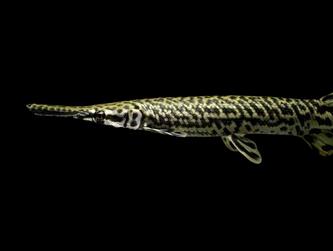
With transformative support of up to $360 million over the next five years from the federal government, The University of Minnesota will be a valuable partner in translating water research into operations to improve water management.
The award, from the National Oceanic and Atmospheric Administration (NOAA), establishes the Cooperative Institute for Research to Operations in Hydrology, or CIROH, a national consortium of science and services to provide actionable water resources intelligence. Headquartered at University of Alabama’s Alabama Water Institute (AWI), CIROH consists of 28 academic institutions, non-profit organizations and government and industry partners across the United States and Canada.
“University of Minnesota is a powerhouse in the social and natural sciences and engineering of water resources,” said Melissa Kenney, Director of Research at the University of Minnesota’s Institute on the Environment and the UMN CIROH lead. “Being part of the CIROH consortium creates unique opportunities to collaborate with NOAA to conduct impactful research that will improve the nation’s ability to effectively manage water resources given climate variability and change.” Kenney has led similar work with NOAA’s Climate Prediction Center, which released updated temperature and precipitation outlook maps in September, and is currently working on drought and hazard outlooks with the National Integrated Drought Information System.
CIROH will support four broad themes:
- Water resources prediction capabilities
- Community water resources modeling
- Hydroinformatics
- Application of social, economic and behavioral science to water resources prediction
The consortium assists NOAA’s vision of a water- and weather-ready nation. CIROH aims to create knowledge that supports improved water data products that will be regularly produced by NOAA. NOAA data products, like these, are used to support water resource and emergency management decisions at the community, regional and national level. This requires mutual learning between scientists and water managers to collaboratively develop hydrologic models, prediction tools and decision support products that provide information that improves water management decisions.
“I am proud to be spearheading this unprecedented Cooperative Institute, which will create a consortium of institutions that will leverage their individual prowesses to address today’s most pressing water issues,” said Scott Rayder, AWI executive director.
Jeff Peterson, Director of the Water Resources Center (WRC), will connect U of M hydrological expertise with future NOAA research needs. “The University of Minnesota brings wide ranging expertise to this consortium as well as long standing relationships with communities in addressing water issues. Our experience with the diverse range of water issues in the Upper Midwest, and professional and scientific connections, will be key to building collaborations within this national network.”
Steven J. Burian, AWI director of science and professor of civil, construction and environmental engineering, will serve as the executive director of CIROH.
“We now begin the real work of co-producing research with NOAA and other partners that will benefit society and provide learning opportunities for students for years to come,” said Burian. “The research innovations delivered by the Cooperative Institute will improve forecasts of floods and droughts, increase efficiency of water resources management, protect water quality and empower stakeholders to make confident and timely decisions.”
CIROH’s consortium members include: The University of Alabama; Brigham Young University; Colorado School of Mines; Tuskegee University; The University of Alabama in Huntsville; University of Arizona; University of California San Diego, Scripps Institution of Oceanography; University of Hawai‘i at Mānoa; University of Iowa; University of Minnesota, Twin Cities; University of Saskatchewan; University of Utah; University of Vermont; and Utah State University.
Consortium partners include: Baron Weather Inc.; Coastal Carolina University; Consortium of Universities for the Advancement of Hydrological Science Inc.; Dauphin Island Sea Lab; Gulf of Mexico Coastal Ocean Observing System; Jupiter Intelligence; New Mexico State University; Oak Ridge National Laboratory; The Pennsylvania State University; RTI International; Stevens Institute of Technology; University of California, Davis; University of Illinois at Urbana-Champaign; and University of South Carolina.
This announcement was adapted from an announcement first made by the University of Alabama. You can see the full announcement here: UA Awarded $360 Million to Lead National Water Effort.
-30-
About the Institute on the Environment
The University of Minnesota Institute on the Environment supports research across the disciplines, develops the next generation of global leaders, and builds transformative partnerships – in service of solving our world's greatest challenges. IonE’s mission is to lead the way to a future in which people and planet prosper together. Learn more at environment.umn.edu.
- Categories:
- Agriculture and Environment
- Environmental health
- Water





